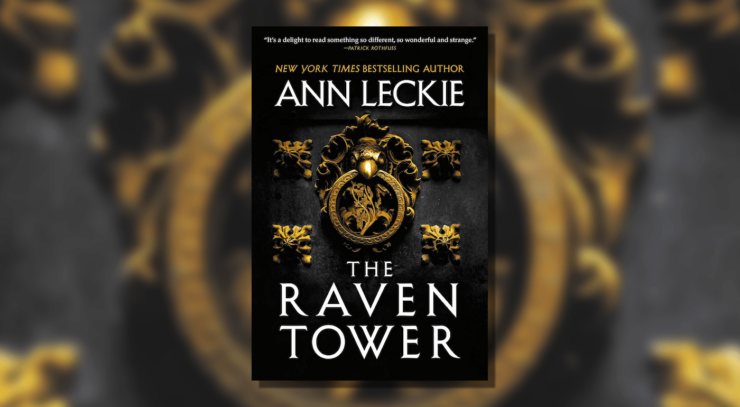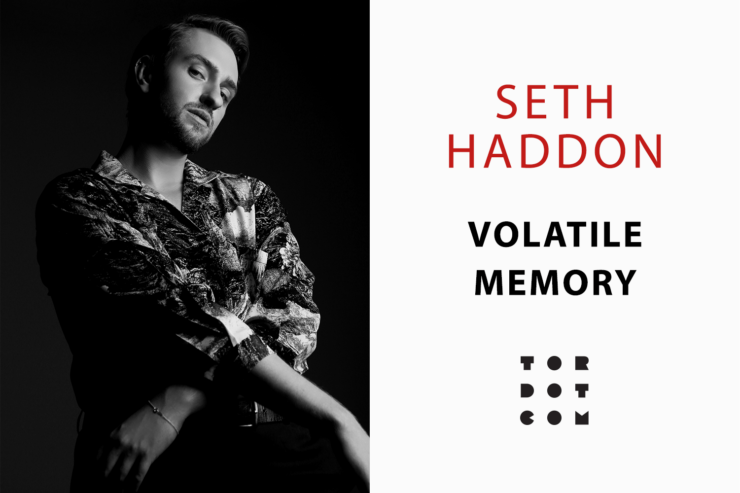I have been thinking about this question. What is a name? Where do names come from? What if the sounds that make the word the Raven in Iradeni make some other meaning in another language, and that meaning is not what I am? What if sometimes I am called the Raven but sometimes something else? Is there one essential name for anything?
I’ve long loved Ann Leckie’s novels. I love them for their complexity and political intrigue and the sometimes subtle interrogation of what it means to be a person. All of Leckie’s books, particularly her Imperial Radch series, are laden with unanswered questions and ripe for re-reading and analysis.
The Raven Tower, Leckie’s 2019 foray into fantasy, is similarly masterful. Like all of her books, The Raven Tower is concerned with imperialism, power, and personal identity. A loose retelling of Hamlet, the novel contains familiar characters—a throne usurped by a jealous brother, a grief-mad heir bent on revenge—made unfamiliar by a new context. It’s a story about gods meddling in human politics and people manipulating gods in return.
And perhaps most important, The Raven Tower is a story about stories, about language. For the gods in Leckie’s novel express their power through speech: “A god’s words are inescapably true, and gods make things happen by speaking them—so long as they have sufficient power, of course.”
The plot of The Raven Tower hinges on communication—the logistics of communing with gods who don’t speak with human mouths, the political machinations involved in interpreting godly symbols, the dubious translation of duplicitous foreign emissaries. This preoccupation with communication extends to the narration of the book itself: The Raven Tower is a nested, refracted story told in both first- and second-person narration. The first person narrator is an ancient god called the Strength and Patience of the Hill who speaks directly to the book’s main human character, Eolo.
Eolo is a young soldier and, in a relatively rare turn for fantasy protagonists, a trans man. The second-person narrator provides the reader with both an intimacy and remove from his character. The second-person narration places the reader directly in Eolo’s perspective, but we also have no access to Eolo’s internal monologue. We learn about him through what the Strength and Patience of the Hill wonders, guesses, or suggests that Eolo is thinking. The god might intuit that Eolo is afraid, or guess at a recent shoulder injury from their observations of how Eolo moves through the world. So even as the story in The Raven Tower is revealed to us, it’s obscured. We’re left to wonder what’s missing, what might be left out, what the truth is—if a stable truth even exists in a setting with such interfering gods.
In Hamlet terms, Eolo is a stand-in for Horatio: a loyal friend and adviser to Mawat, the grief-stricken son, as they unravel the plot that displaced Mawat’s father from the throne. But unlike Horatio, Eolo isn’t secondary to Mawat’s Hamlet, or to the plot of the story. In fact, I find Eolo to be one of the most important and fascinating characters of any recent fantasy book.
It’s so refreshing to see a trans character portrayed positively. This representation isn’t new for Ann Leckie; all of her books deal with gender in some way, and her more recent novels have featured a diverse array of nonbinary characters. But The Raven Tower introduces a trans character who lives in a world much more like ours than the ones that we encounter in other Leckie novels, one where trans identities are not always accepted or even understood. And while Eolo is never misgendered or discriminated against, he does have to repeatedly explain his gender identity in the face of confusion and uncertainty.
Yet from the very beginning of the book, Eolo displays an unshakeable confidence in himself. In an early conversation Mawat suggests that Eolo ask the titular Raven god to make it “so you could be who you are.” In response Eolo says, “I already am who I am.”
This is a profound affirmation of Eolo’s wholeness. And it echoes God’s response to Moses in the Book of Exodus: “I am who I am.” In this echo, Leckie has positioned Eolo’s trans identity in alignment with the ultimate statement of godliness and self-affirmation, perhaps the most famous declaration of existence in Western culture: Like God, Eolo does not need to explain his existence. His trans identity is self-evident, without the need for justification or explanation. He knows that he is a man, and there is no way to deny that. He exists. He already is.
And we have to remember, Eolo lives in a world where language has power. While Eolo can’t kill or make miracles just by speaking, his words do shape the world around him. As the Strength and Patience of the Hill notes earlier in the book, “There were many things human beings could make happen just by speaking… I hadn’t thought my ability to affect the world with speech to be different in kind from what humans could do, only different in scope.”
Like the gods of The Raven Tower, Eolo speaks his truth into being. Throughout the book, he tells the people around him that he is not a woman, that he is not pretending to be a man. And like the gods, his words shape the world. By saying that he is a man, Eolo is understood as one.
As the novel moves to its climax, Eolo becomes a crucial intermediary between the various human factions and gods. He is the first character to speak directly to the Strength of Patience of the Hill. When disaster strikes, Eolo uses this experience to suggest a clever solution in order to read the symbolic tokens gods use to communicate with humans when it seems no one has the training to do so. Other characters in the novel remark on his thoughtfulness, his ability to “cut to the core of things.”
Eolo also refuses to go into the House of the Silent, a convent of a forest god that only women are allowed to enter. Mawat accuses Eolo of being stupid and unreasonable in his refusal. But I think in this decision we see not just Eolo’s fear of being seen as a woman, but a sensitivity to the power of language and symbols.
Eolo’s trans identity means that he deeply and intuitively understands how seemingly small words or symbols—pronouns, a haircut, a piece of clothing—have the power to convey enormous meaning. He understands that naming the House of Silent as a woman’s place has a material power. These distinctions are symbolic, but symbols are how people make sense of the world, particularly in a book where god’s symbols make the world.
In the novel’s denouement, Eolo takes on the role of a priest, interpreting the god’s words and counseling human leaders on how to respond. And it seems like this isn’t limited just to Eolo: another character notes that in the far north, where the Strength and Patience of the Hill is from, all of the god’s favorite priests are trans. The novel leaves unanswered if this is why Strength and Patience takes such an interest in Eolo, or indeed why the god decides to speak directly to Eolo at all. In my reading, I think the Strength and Patience of the Hill sees a mirror in Eolo, someone who possesses the same sense of patience and immovability, someone who is willing to shape a world set against him.
This is such significant representation in a media landscape that too often imagines trans people as confused and deluded, or even deviant, predatory. Even supposedly sympathetic media often paints trans people as less than—victimized, broken, longing for something they aren’t.
Against this backdrop, Eolo asserts his certainty, his wholeness. He is not broken or less than. He already is who he is. Eolo is powerful because of his trans identity, not in spite of it. He is able to intervene in the plot of the novel because his trans experience has taught him how to interface with gods. In The Raven Tower, trans people are not confused or broken, and their trans identities are not an absence or a lack, but a presence, a power.
Eolo’s self-assertion is a model for real life queer and trans people. His declarations remind me that no matter how often people attempt to ban our access to medical care, push us from public life, or reject our existence, we already are who we are. We already exist, and there is no denying that.
In The Raven Tower, Eolo speaks with the same power as a god, making things happen with his words. Trans people do this in the real world as well. We use pronouns, name changes, symbols and speech, to assert the truth of our gender, over and over, until it becomes real. Like the gods of The Raven Tower, we speak our truths into being.
Logan Dreher is a writer, climate organizer, baker, and lifter of heavy things. They publish their thoughts on everything from the gender politics of Thelma & Louise to climate policy in their weekly newsletter, Fresh out of the Oven. Logan likes to think about how science fiction and fantasy can help us in imagining a better world.














